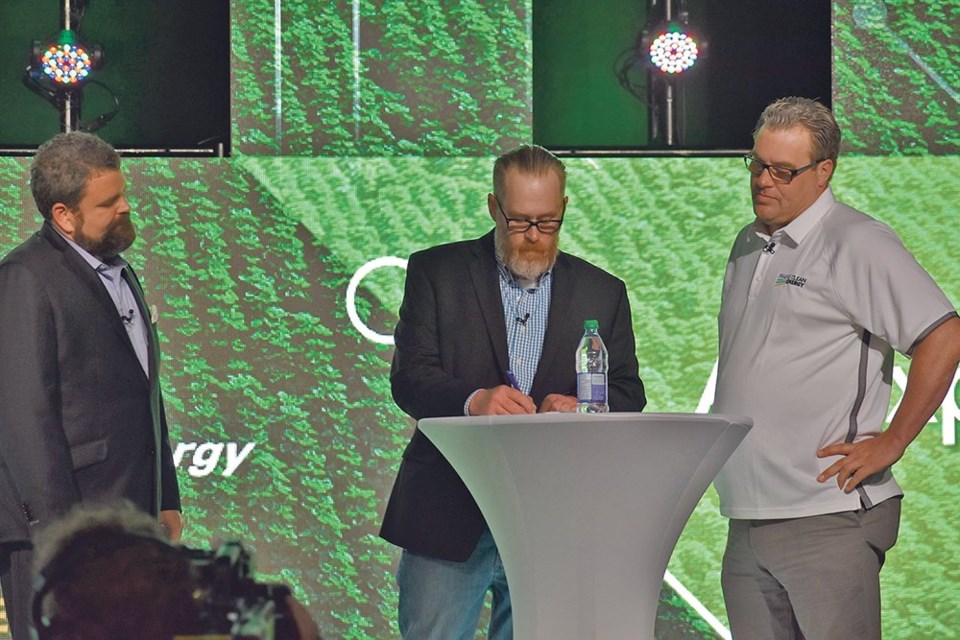REGINA — Farmers have another potential market for their flax straw.
Start-up company Prairie Clean Energy has built a flax biomass pellet production facility in Regina, which it debuted at the recent Canada’s Farm Show.
Prairie Clean Energy is hoping Saskatchewan will convert to biomass in the near future, but for now the plant will produce 60,000 tonnes of dry flax pellets per year to be sold to overseas markets.
“That’s where the customers are,” president Mark Cooper said. “There are opportunities to do that right here if SaskPower was interested in it, so we’re pushing them hard on that.”
Cooper said the facility has the potential to produce 120,000 tonnes annually.
“The real opportunity is to take the product, buy it from producers to aggregate and densify it here and use it right here in Saskatchewan.”
Cooper said Canada averages nearly 750,000 tonnes of flax straw each year, which is usually burned in the field. Now, farmers can sign a deal with Prairie Clean Energy to sell the straw instead.
Thomas Mackenzie became the first farmer to sign a flax-straw deal at Canada’s Farm Show June 22. Mackenzie runs a dairy and grain farm north of the city with his brothers.
The deal was an easy decision for Mackenzie since they changed their barn bedding to sand from flax straw. The move means they will have excess straw.
“It’s sustainable and we don’t like burning things.”
Canada is planning to close coal power plants by 2030, as are many countries around the world. The Paris Climate Agreement outlined a goal for 3,000 coal-fired plants to be shut down around the world by that time to slow climate change.
“I would say the sooner the better,” Mackenzie said. “We’ve got to close these coal plants by 2030, and you can convert them to biomass and be burning that right now.”
The new plant is located in a refurbished warehouse in north Regina, designed to be self-sustaining.
“If you’re converting from coal, you’re moving from a carbon intensive power production to carbon neutral… if you use carbon capture technology, you can actually make it a carbon negative, so it immediately changes your emissions profile.”
With coal being removed from the equation, Cooper believes now is a huge opportunity to begin the transition.
“We are confident in the demand,” said Cooper.
“The biomass powerplants, there are over 3,800 of them already in production, already producing energy in both Europe and Asia and another 2,000 coming on stream within the next decade.
“By 2030, the demand for biomass fuel is going to exceed supply by more than 10 million tonnes.”
Cooper said the most attractive use for biomass energy is that it can supply baseload power, or the minimum electricity a power grid requires. Wind and solar sources cannot yet do this.
Most biomass energy is currently created by burning wood, which Cooper said the company will also offer. It hopes to have seven flax and four wood-processing facilities across North America by 2027. Each facility will cost $8 to $10 million.
“We want to capture as much market share as we can before other players get in there because they will sooner or later.”
There are a variety of uses for the pellets. Cooper said chicken farmers using coal have been looking to convert, and the clean production of ammonia, hydrogen and sustainable aviation fuel is possible with the flax straw pellets.





